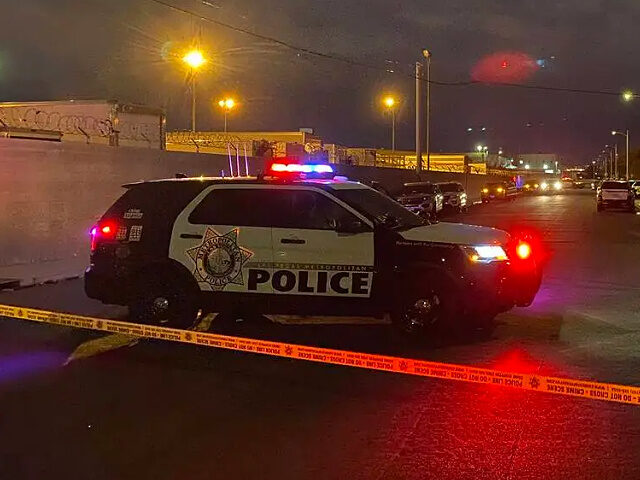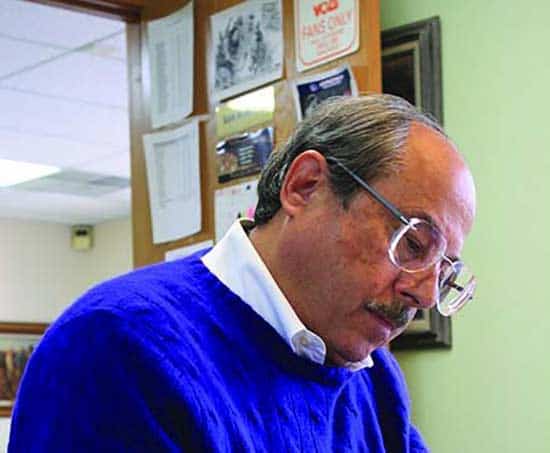
John Wayne’s departure for a three week
tour in Vietnam in the Spring of 1966 was just
what you’d expect from old Duke’s modest
sense of deprecatory humor, when he told
reporters, “I can’t sing or dance, but I can
sure shake a lot of hands and share a bunch
of cold beers with our boys there.”
He did just that, then stayed another four
weeks on his own dime and time. Therein is
the real story of John Wayne in Vietnam.
Hollywood lore is the stuff of legend, especially when it involves iconic actor John Wayne, best known for
playing macho soldiers or western characters in more than 250 films
before his death in 1979. However, his real-life military involvement is
what had people talking in 1966 during the height of the Vietnam War.
Thanks to the USO’s tireless efforts, celebrities have visited and
cheered American soldiers since 1941. However, Wayne’s visit was
different. The U.S. Department of Defense contracted Wayne for the
three-week tour of Vietnam. According to Wayne, he would be “going
around the hinterlands to give the boys some personal support.”
John Wayne’s Vietnam tour had three missions.
One was his good
will visit to cheer American combat troops and their wounded, plus
some serious fact-finding for a movie he had in mind. Also, he
believed in the political necessity of the war.
Wayne said, “It is important that we keep our word on treaties to
protect our allies, a universally unpopular view in peace-loving, pink
Hollywood.”
He felt so strongly about this that he said it was his duty to make a film
that showed why the war was needed. He said that his planned film,
The Green Berets, was “anti-Communist, pro-Saigon and prompted
by the American Left’s anti-war sentiment.”
It was the only major Hollywood film to support the war effort.
Wayne’s son, Patrick, told me of his father’s Vietnam experiences,
“To make a truly realistic, authentic film, My father said he needed
to go to Vietnam personally and meet with the real combat soldiers
who were literally sometimes face to face with the enemy on their
turf….and gain their first-hand experiences. He wanted this film
to feature the Army’s Special Forces guys, the early Marines in
Vietnam and their role in the war…and he wanted to get it right.”
John Wayne’s in-country education began in the spring of 1966,
at age 59, with a visit to the 3rd Battalion 7th Marines at Chu Lai,
where he shook a lot of hands, passed out a lot of good will, cold
beer and also came away with a lot of good Marine field craft.
For the rest of his tour, though, Wayne visited the Army’s Special Forces (SF) camps, especially the ones out in the boonies, far away from REMF Central.
Former SF SSG John E Padgett recalled, “When an SF camp began
construction, the first priority was a strong defensive perimeter. The
very next priority was a heavily fortified team house/club from which
planning and missions originated, often accompanied by copious
supplies of Carlings Black Label and Pabst Blue Ribbon beers. This
was also the guest house for our few welcomed visitors.”
Retired SFC Ken Richter recalled Wayne’s time at the 5th Special
Forces Group, Detachment A-219, Mike Force, Pleiku, saying, “I
remember him in the C-2 bar one evening saying he hoped he could
witness us SF guys kicking Charlie’s ass. He got his wish.”
After his discharge, SFC Richter worked for Wayne as dive master on
his boat, working on a charitable discovery and salvage assignment
for Stanford University. He adds, “John Wayne was a true patriot and
his boat was full of memorabilia from various military units.”
Wayne’s boat, a World War II minesweeper he bought and converted into his private yacht, was named The Wild Goose.
It was
added to the National Register of Historic Places in 2011.
Speaking of WWII, there has always been a persistent myth that John
Wayne dodged the wartime draft, which he did not do. He was classified as 3A (head of family) in 1942. In 1943, he requested a change to 1A, which was turned down, through backdoor politics by Republic Pictures.
He persisted and in May of 1944, was re-classified as l-A. Republic Pictures intervened openly against Wayne’s wishes and got his classification changed to 2-A (support of national
interest) in August of 1944.
Some insiders, including family, said that
he always felt guilty about not serving in
WWII and that is what drove him to be so
personally up front about Vietnam.
Thus, John Wayne made stops at Nui
Ba Den to visit the men of A-324 B and
Detachment C-3 at Bien Ha. His stated
goal to his Saigon minders was to spend
time with most of the A and B teams in the
III Corps, soaking up SF background and
accuracy for his film and hoping to boost
the morale of these warriors.
By June 1966, already past his scheduled
departure time, Wayne made layovers at
Throng Toi and An Lang, where he gathered real and hard experience from the
warriors of A-425. Officers, NCOs and EM
debriefed him on their mission, operational
area and the enemy situation. He was also
shown how the new camp was set up,
including its defenses.
“This was not an easy visit for us,” recalled
former SGT John McGovern, who was one
of Wayne’s guides there. McGovern, a Psy
Ops NCO, recalls, “He wanted to go where
the action was, far away from the flagpole
and the safer sites. Our S-2 knew that the
other side knew he was there and we knew
what a coup it would be if the Cong could
kill the great John Wayne.”
One of Wayne’s guides was SGT Leroy Scott, who told how Wayne’s
helicopter was headed into a Special Forces camp near Pleiku in
the middle of some heavy incoming action, and were warned to
abort landing when two rounds smacked the Huey. SGT Scott adds,
“An immediate 180 occurred.”
This was a larger problem, too, as there was documented intel
that the Republic of North Vietnam’s Soviet mentors, the GRU and
Spetnetz, had already planted the propaganda benefits of Wayne’s
chopper being shot down, his jeep blown up or for a sniper to pick
him off.
John Wayne spent time under fire at the wire plus in the OPs and
LPs. And, of course, he chowed down with the guys. But not every
day in Vietnam was a picnic. Stories abound about the “close calls”
Wayne had. One report mentioned that a Viet Cong sniper’s bullet
narrowly missed him, hitting the ground 50 feet behind him. Wayne
Beer in hand and in his rarely seen reading glasses, The Duke visited the fighting men at SF a Team
323 at Camp Trai Bi in June of ’66. (Jari Salo)
It was a welcoming Jeep delivery of Wayne from the chopper pad at Plei Djerang, with Capt John Kai,
camp CO, at the wheel. Passengers were chopper crew, PIO officer, C-2 officer and The Duke. (Don Briere)
later said to film historian Michael Munn in 1974, “I almost walked
into a sniper’s bullet that had my name on it. I heard the wind of the
bullet whistle past my ear and realized I had had a narrow escape.”
He added later to family members, “Those tough kids of ours over
there have narrow escapes every day, God bless ‘em, ‘cause sometimes they can’t escape getting hit.”
Fortunately, wherever John Wayne would go, for the most part,
good times rode along. From all reports, he had a true and sincere
knack for putting soldiers at ease by signing autographs, taking pictures of them and happily posing for pictures with the guys.
Young Marines called him SGT Stryker, his character’s name in his classic
WWII film, The Sands of Iwo Jima. Men from out of the way firebases threw parties and barbecues in his honor. All agreed that
John Wayne knew how to party and how to work.
4 Sentinel | November 2020
“When he visited us, he brought in both ice
and beer, so we started the day with an
ice chest of cold American beer,” recalled
Retired MAJ John Hyatt, of Wayne’s visit
to A-219. “It was empty when we returned
home at the end of the day.”
Then a first lieutenant with the 281st AHC,
flying support missions for 5th SF units, John
Hyatt recalls John Wayne’s visit to Det C-3,
Bien Hoa, in June. “We had just put A-323 on
the ground at Trai Bi, Tay Ninh, and were taking sporadic fire on the perimeter, and there goes The Duke out to join some of the team
on the line. Helluva man.”
Interestingly, two years later, John Hyatt was at Ft. Rucker flying a camera ship to film some of the scenes for The Green Berets.
Even though Wayne was offered VIP treatment, he visited very remote Special Forces camps, unlike many celebrities, who stayed
comfortable in safer urban zones.
The few others who joined the field troops included
brave USO visitors, the wonderful Donut
Dollies, and the heroic Martha Raye. One of the more amazing “John Wayne in Vietnam” stories centers around the SF A-251 camp at Plei Djereng.
As Wayne made his stop there in June, the camp
allegedly came under attack. Supposedly, everyone was returning fire, including Wayne, who was on an M-60, according to
the tales, which the Internet grew taller than
The Duke himself. Someone was quoted on
at least two blogs saying, “I’m telling ya…
John Wayne was real fuckin’ John Wayne
right with us. He was on top of the TOC
choppin’ Charlie with a 60.” Dramatic, exciting and what you’d expect from The Duke.
But, it’s fiction, not fact.
Special Forces vets
who really were there at the time deny the
story totally, as did Wayne and his family.
Spec4 Donald Briere, who was the camp radio operator then and
who would retire as an SF LTC, said, “There was no raid when Mr
Wayne was there. That nasty raid happened a few days prior to his
arrival. Obviously, the camp was under enemy observation and tension was high. While there, John Wayne did get familiarization with
some of SF’s own special armament.”
As for his dad “chopping Charlie,” son, Patrick, said of the incident,
“Never happened. If it had, he would have told us in grand detail. It
is also a certainty that the military PIO and the Saigon press corps
would have had a field day with it, too.”
For all the stories of fun, heroism and adventure, there are also tales
of sentimentality. Two of these center around bracelets that were
bestowed on Wayne during his time in Vietnam. The first bracelet
was a POW/MIA bracelet that represented the life of CPT Stephen
P. Hanson, USMC. Hanson had sent his wife and son a picture of
himself with the caption “Me as John Wayne.” Sadly, the Marine
was shot down over Laos; he never returned home. Wayne wore his
bracelet to commemorate Hanson. He kept in touch with Hanson’s
wife and son until his own death.
The other memento was a “Yard” bracelet given to him by the Degar
or Montagnard People of Vietnam’s Central Highlands, fighters
against communism. The brass bracelet was a gift from the II CTZ
Mike Force, presented by their Montagnard commander, Ka Doh.
The bracelet is a symbol of friendship and respect. Sentinel editor
Camp Plei Djerang was home to SF Team A-251 during John Wayne’s memorable visit there in 1966. It
is where the reality of then and the internet rumors of today were separated. (Special Forces Association)
Plei Djerang, June 1966, Camp CO Capt John Kai; their guest, John Wayne; SP4 Don Briere; unidentified C-2 officer. (Don Briere)
November 2020 5 | Sentinel












